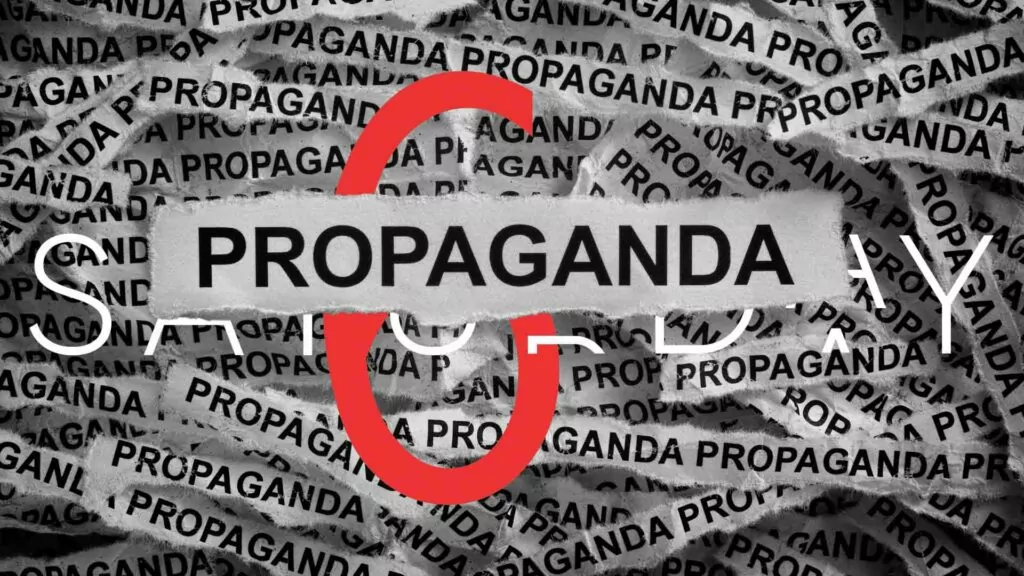When a politician gets ready to do a television interview he’ll have his staff prepare “talking points.” These are brief one or two line summaries of the points the politician most wants to discuss. They need to be short and sweet so they will be easy to remember, and so the politician can stay focused on them.
Then, if a reporter wants to ask about a government scandal, the politician will try to turn the conversation to these talking points: “Linda, that’s not what Canadians are concerned with. But they do care whether they have a job which is why our government has…”
Pro-life talking point
In the abortion debate we have one core talking point:
From conception onward the unborn are precious little human beings like you and me. And they deserve the same protection under the law.
That’s it. There are other aspects of the abortion debate – other sub-issues – but this is the big one, the central truth that we want to advance. This is the talking point we want to bring up in every conversation we have about the unborn.
Why is it so important to keep this talking point in mind? Because our opponents wants to gets us sidetracked. On rare occasion the other side will actually argue that the unborn aren’t human, but that’s not a discussion they can win – the facts are all against them. And the longer we talk about the humanity of the unborn, the more certain it is that the truth will come out.
So, because they can’t counter the truth, they want to get the discussion moved to more winnable ground. They want to get us off topic.
We want to defend who not how
That’s what we saw happen some years back, right after the Fraser Valley East ARPA set up a 10,000 flag display on the grounds around the Chilliwack war memorial. Half the flags were pink, the other half blue, and each one represented 10 children who had been killed by abortion in the space of a single year in Canada. It was an eye-catching display.
However, both local newspapers denounced it as a “stunt.” According to their editorial and articles, the protest shouldn’t have been set up so near the war memorial or so close to Remembrance Day. And they didn’t like the way the ARPA group had gone about getting permission for the display, with one paper going as far as accusing the organizers of lying.
They were offended because of how it was done, when it was done, and where it was done. What they were studiously avoiding was a discussion of who the display was about.
In the face of this type of outrage it is easy to become defensive, and apologetic, even when we’ve done nothing wrong. But we need to understand this hostility for what it is: they said it was about the how, when and where, but that simply wasn’t true. If someone set up an identical display under identical circumstances, but each flag had represented someone who died from cancer, instead of denouncing it, the papers would have treated us to articles about courageous cancer survivors. The truth about cancer isn’t offensive, so it doesn’t need to be evaded.
But because this was about the unborn, they wanted to move the discussion to more winnable ground. Instead of debating the humanity of the unborn, they want us to debate the timing of our event. Instead of discussing when life begins, they wanted us talking about appropriate locations. But none of this was genuine – it was all about distraction and evasion.
So we need to keep our focus on just where they don’t want it to be. No matter what they say, we need to steer the conversation back to the unborn.
So how might that look in real life? Here are a few possibilities
1. Argue by analogy
The abortion debate hinges on the humanity of the unborn, and that’s what we want to discuss. One way to get there is by pointing out how people would act if this was about 100,000 people who were already born. They’ll say “That’s different!” and that, right there, is our opening to investigate with them whether it really is different.
How could you do this so near Remembrance Day?
Abortion kills more than 100,000 children each year, and that’s bigger than the whole population of Chilliwack. If each and every year somewhere in Canada a Chilliwack-sized city was wiped off the face of the map, would you worry about the timing of the protest? Or would any time and all the time be the appropriate time?
But that’s different. The population of Chilliwack is made up of human beings, and the unborn aren’t human yet.
Ah, now we’re getting to the real issue here – are the unborn different than you and me? Why don’t we take a look at the facts…
2. Question the insult
In debate, when someone throws an accusation at you, one of the more effective counters is to simply ask the person to explain their accusation and why it is valid. Their accusation isn’t valid, so they won’t be able to do it, and we can return the focus to where it should be.
“Why did you have to do it next to the War Memorial?”
“Abortion kills 100,000 children each year, so can you tell me why exactly it is wrong to tell people about them next to a war memorial?”
“Because it dishonors the service of these soldiers.”
“Telling people that 100,000 children are being killed each year in Canada dishonors our honored dead? How so?”
“Because it distracts from what they did!”
“How so? They fought for our rights, and there is no more fundamental right than the right to life. So what more appropriate place could we speak up for the 100,000 unborn children who are being denied that right?”
3. Keep it simple
And sometimes our response can be very short and to the point (so long as that point is our talking point!).
“How dare you!”
“When 100,000 children are being killed each year in Canada, how could we stay silent?”
“I’m outraged”
“1 in 4 children in Canada are murdered before they are born. If we want to get outraged, how about we get outraged about that?”
Conclusion
It doesn’t matter exactly how we do it, or exactly what we say. What’s vital is only that we stay on message, and that we don’t let ourselves get distracted into discussing issues that are nothing more than distractions. The unborn need us to stay focused.














